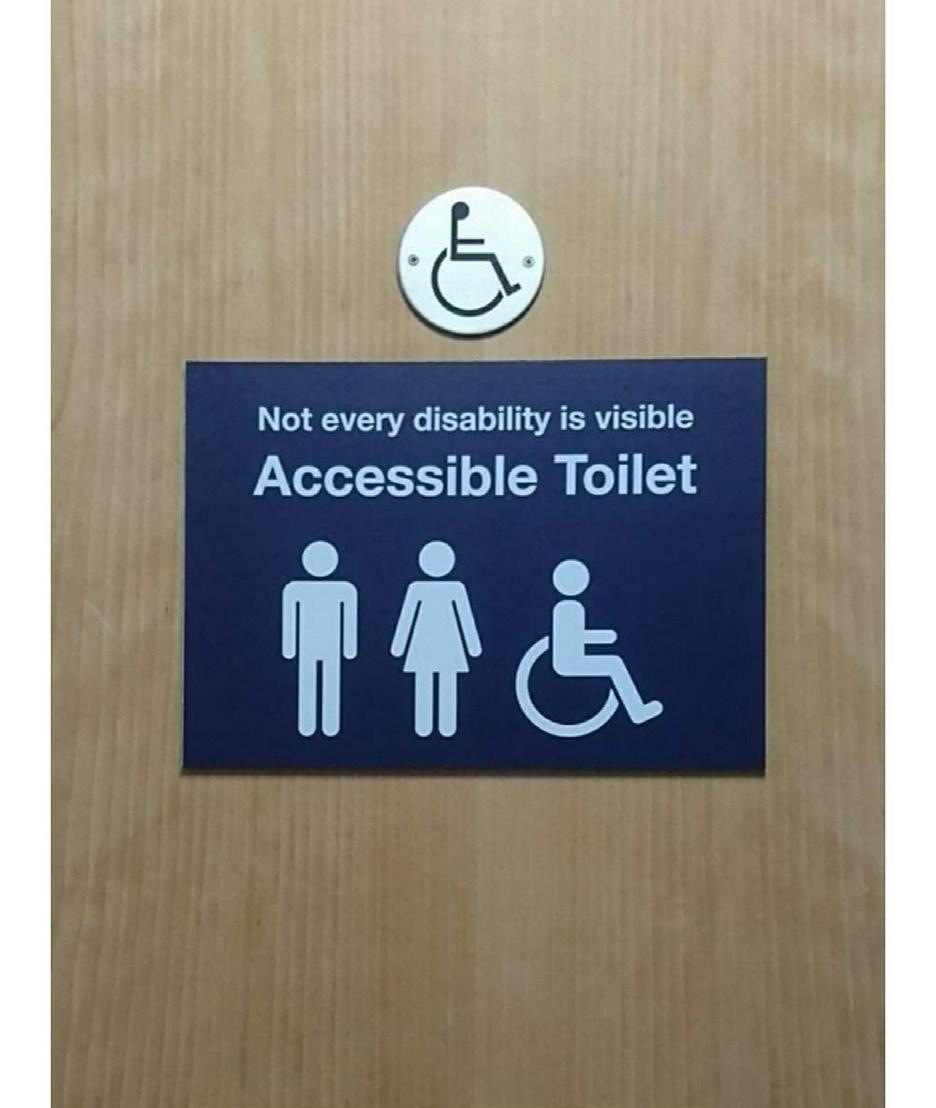
2 minute read
Signage, wayfinding and routes through an airport
All airports have guaranteed to us that their staff will never separate a person with a hidden disability from an accompanying person at any stage of the airport journey, unless they have established with both people that it is acceptable to them. This was a key requirement from CAP1411 and we welcome the commitment from airports on it.
Some airports have introduced quiet routes for people to use, which miss out the busier passenger routes through, for example, the retail area immediately following security search. This is particularly important at bigger airports, many of which have busy and congested retail areas, with glaring lights, loud sounds and shiny black floors, which can cause difficulty for people with sensory issues. We particularly like Southampton’s initiative of using their ‘helping hands’ symbol on signs installed at key locations to assist passengers with identifying a quiet route through security and into the departure lounge. Bristol has advised us that they are planning a similar route using the sunflower emblem. We encourage other airports to follow Southampton and Bristol’s lead.
Advertisement

Heathrow and Liverpool have introduced quiet rooms around their terminals. These allow for some passengers to avoid the sounds and disturbances often associated with busy terminals.
We would like other bigger airports to follow its lead and introduce similar rooms. For those airports that cannot provide such rooms (often for practical reasons of insufficient space), we are pleased to note that they have all committed to ensuring that a quiet part of the terminal will be on hand if needed. Many airports have put in place processes that designate specific areas of terminals for this purpose.
A number of airports have committed to reviewing signage and way finding and, in particular, to the decluttering of signage. Heathrow has introduced colour coded wayfinding to help all people with disabilities easily find facilities available to them. Glasgow, following an audit from its local Renfrewshire Access Panel, has reviewed its entire signage, de- cluttered all non-essential way finding, added extra help points and installed more induction loops. Newcastle has worked with the local Percy Hedley Foundation to identify how it could improve signage throughout the passenger journey. Signage throughout the airport has been updated, with a focus on de-cluttering, so that it easier for many people to read and understand. Heathrow has introduced ‘Sign Live’ 7 to improve communication for people with hearing loss. Many airports have introduced hearing loops at key points throughout the airport.
All airports now commit to offering familiarisation visits on request so that people can see the facilities and services on offer before travel and get use to the airport environment. Many actively promote these via their websites. East Midlands offers ‘Try Before You Fly’ visits once a month, which can be pre-booked.







